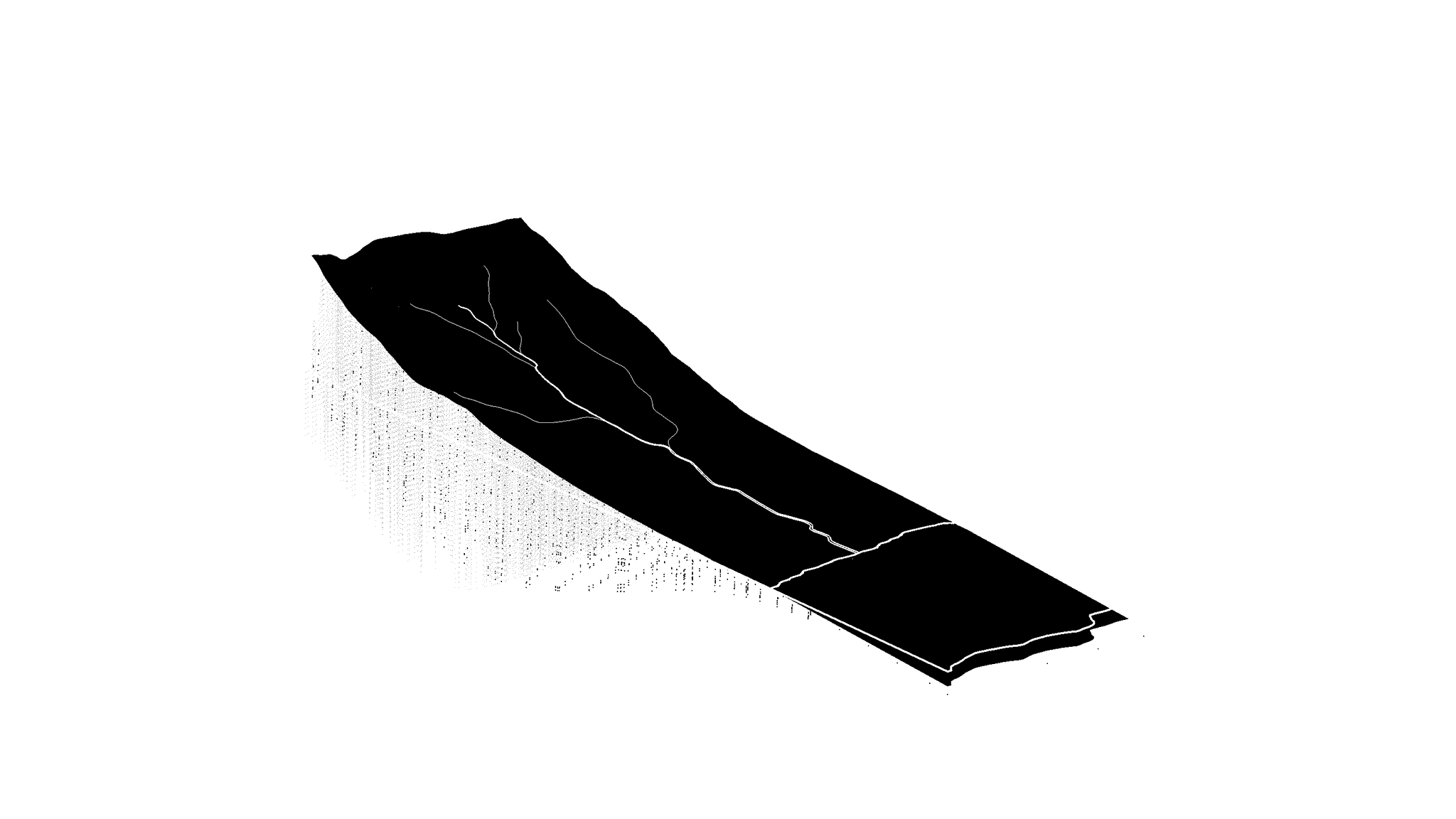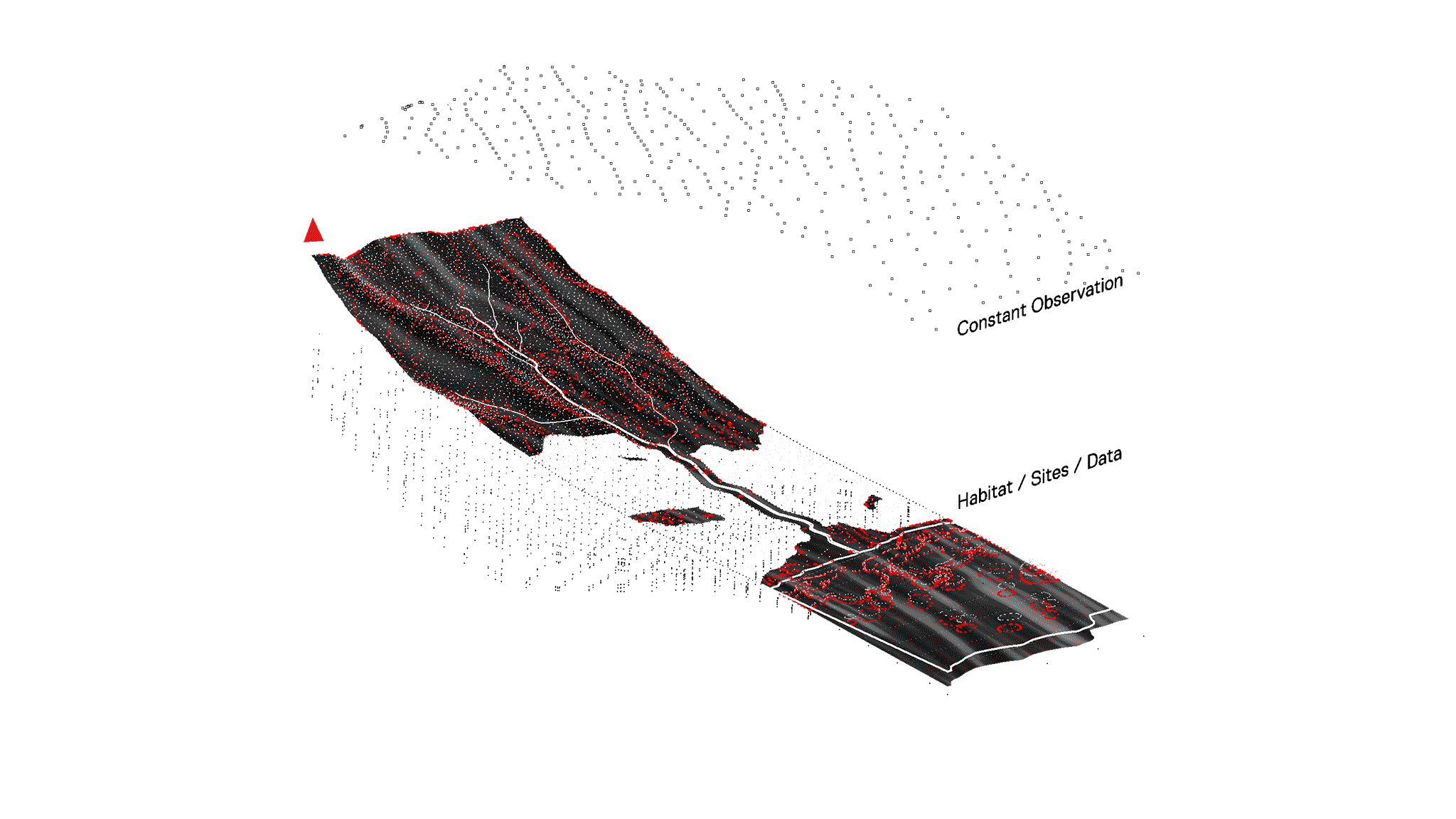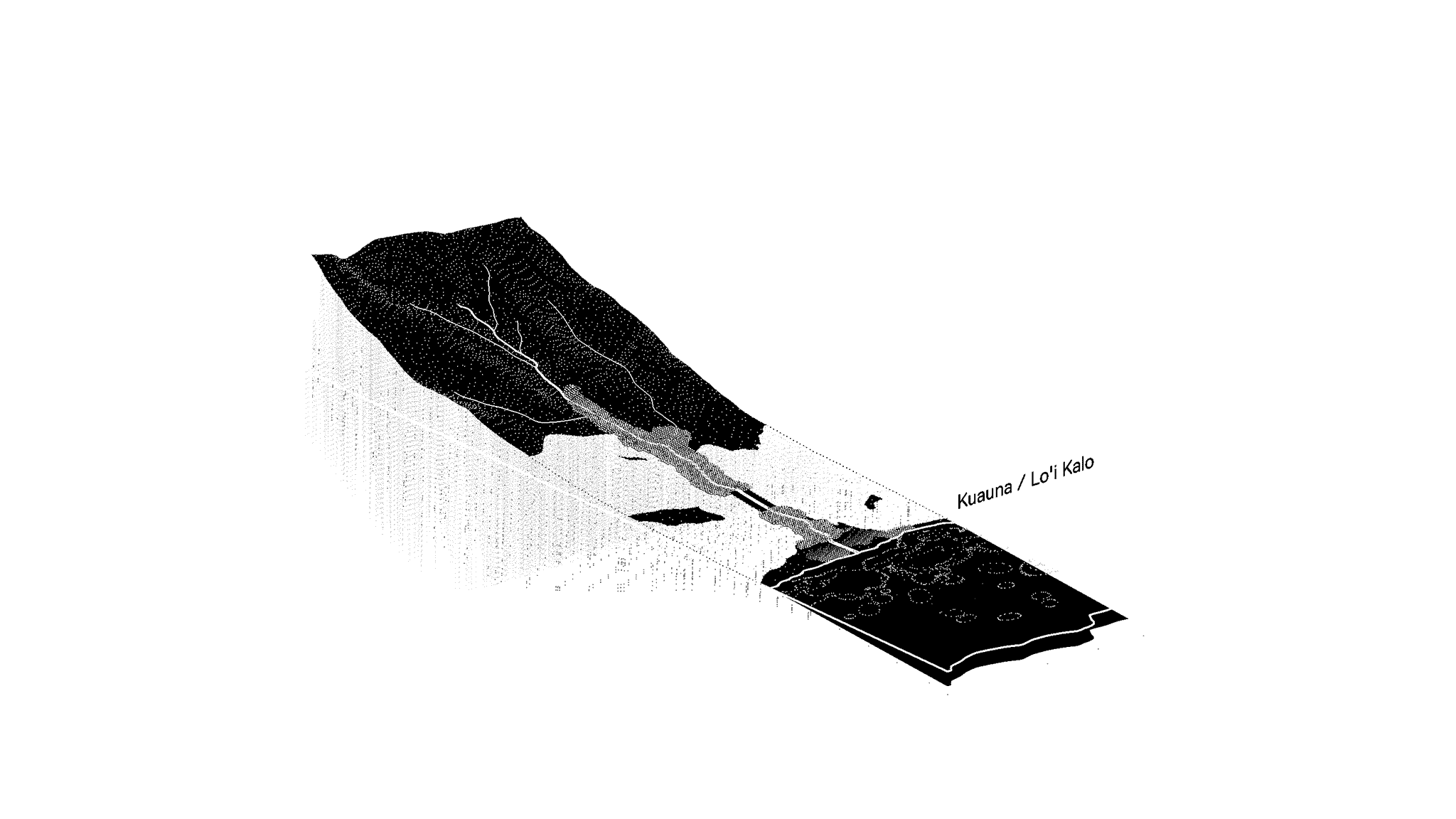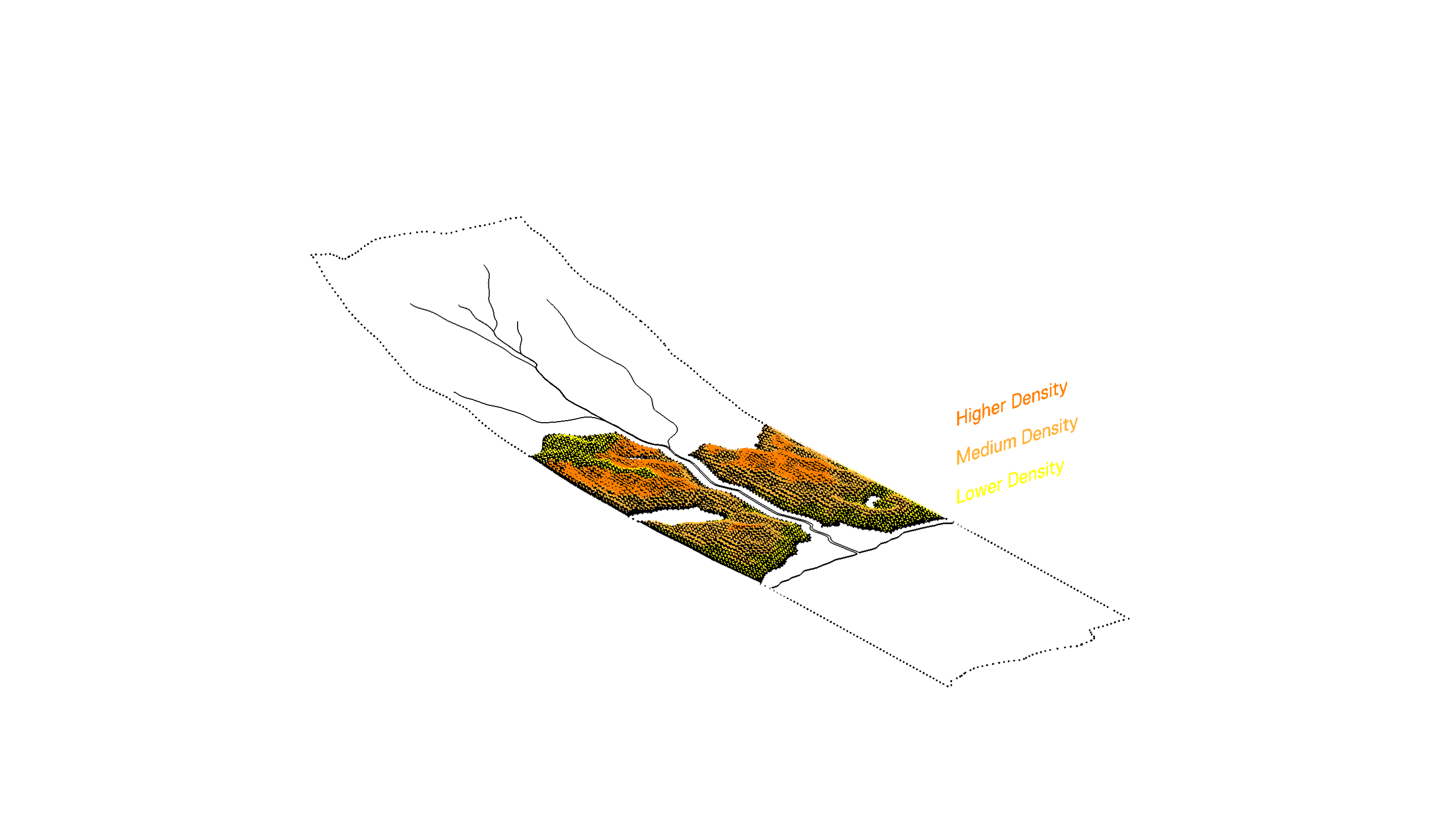RECOVERY PARAMETRICS
INTERACTIVE LAND-USES
The concepts of Kīpuka and Kauhale advance beyond contemporary notions of urban and rural areas. These interactive land-use categories emphasize the harmony between ecological cycles and human development. Interaction between zones occurs across various intensities depending on the relationships between people and their environs, aiming to manage the long-term growth of a developed footprint without hindering watershed health and productivity.
INTERACTIVE LAND-USES
The concepts of Kīpuka and Kauhale advance beyond contemporary notions of urban and rural areas. These interactive land-use categories emphasize the harmony between ecological cycles and human development. Interaction between zones occurs across various intensities depending on the relationships between people and their environs, aiming to manage the long-term growth of a developed footprint without hindering watershed health and productivity.

Image Prompts: Imagine a vibrant community living in harmony with the land, their dwellings interspersed with lush fields and vibrant streams, a testament to the balance between human activity and nature's bounty. Imagine that same community engaged in thoughtful discussion, their hands gesturing over a shared map, their faces reflecting the weight of responsibility for managing their shared home without compromising its health and productivity.
RECOVERY PARAMETRICS
'ILI, NODES, NETWORK
The kauhale system proposes a network of neighborhoods, organized around pedestrian access to resources like food hubs, regenerative resource infrastructure, schools, local businesses, and public transportation. These resources may include Food Hubs and Farmers Markets; Regenerative Resource Infrastructure; Schools and Galleries; Local Artists Collectives, Businesses, and Services; Public and Alternative Transportation.
'ILI, NODES, NETWORK
The kauhale system proposes a network of neighborhoods, organized around pedestrian access to resources like food hubs, regenerative resource infrastructure, schools, local businesses, and public transportation. These resources may include Food Hubs and Farmers Markets; Regenerative Resource Infrastructure; Schools and Galleries; Local Artists Collectives, Businesses, and Services; Public and Alternative Transportation.

Image Prompts: Imagine a bird's eye view of a kauhale system, a network of neighborhoods knitted together by pedestrian paths leading to resources like food hubs, schools, and public transportation. Now, imagine the people of these neighborhoods, their hands busy in the creation and maintenance of these resources, their faces marked by the determination and satisfaction of building a vibrant, interconnected community.
RECOVERY PARAMETRICS
AFFORDANCE
Affordance is a function of Kīpuka to recover human relationships with the habitats, sites, and data resources that comprise an ahupua'a. These relationships afford the ability for humans to harvest energy, water, and other resources while managing the pace of change in climate.
AFFORDANCE
Affordance is a function of Kīpuka to recover human relationships with the habitats, sites, and data resources that comprise an ahupua'a. These relationships afford the ability for humans to harvest energy, water, and other resources while managing the pace of change in climate.

Image Prompts: Imagine a community standing together on the edge of a Kīpuka, their eyes reflecting the intricate relationships between the habitats, sites, and resources that define their ahupua'a. Imagine the same community, their sleeves rolled up, harnessing energy and water from their environment, their actions demonstrating their commitment to manage the pace of climate change.
RECOVERY PARAMETRICS
ALIMENTARY
Alimentary, like the tube in which food passes through the body, describes the function of kīpuka to nourish. The architecture of traditional farming technologies like kuauna (pondfields), kuapā (fishponds), and kua'iwi (fields) transform kīpuka into reliable food sources that perpetuate cultural practices and values for generations.
ALIMENTARY
Alimentary, like the tube in which food passes through the body, describes the function of kīpuka to nourish. The architecture of traditional farming technologies like kuauna (pondfields), kuapā (fishponds), and kua'iwi (fields) transform kīpuka into reliable food sources that perpetuate cultural practices and values for generations.

Image Prompts: Imagine a community gathered around a bountiful harvest, their shared satisfaction stemming from the knowledge that their traditional farming techniques have nurtured both the land and their bodies. Imagine this same community hard at work in the fields, their bodies bent in labor, their faces showing the strain but also the determination to uphold practices that sustain their culture and their land.
RECOVERY PARAMETRICS
Population density and building heights are set according to walking distances to streams, shorelines, forests, wetlands, fields, and other important parameters that define the kīpuka district. These adjacencies reestablish the island's ecosystems as the primary organizing element of the form of the kauhale as city to reinforce the perceptual connection of people to their mauka-makai milieu.
BIOCULTURAL ADJACENCIES
Population density and building heights are set according to walking distances to streams, shorelines, forests, wetlands, fields, and other important parameters that define the kīpuka district. These adjacencies reestablish the island's ecosystems as the primary organizing element of the form of the kauhale as city to reinforce the perceptual connection of people to their mauka-makai milieu.

Image Prompts: Imagine a community where the population density and building heights are determined by walking distances to streams, shorelines, forests, and fields, its design reinforcing the people's connection to their natural surroundings. Now, imagine the people of this community, their hands and minds engaged in the complex task of shaping their city in a way that respects and enhances its ecological adjacencies, their shared goal a sustainable future where nature and urban life exist in harmony.
